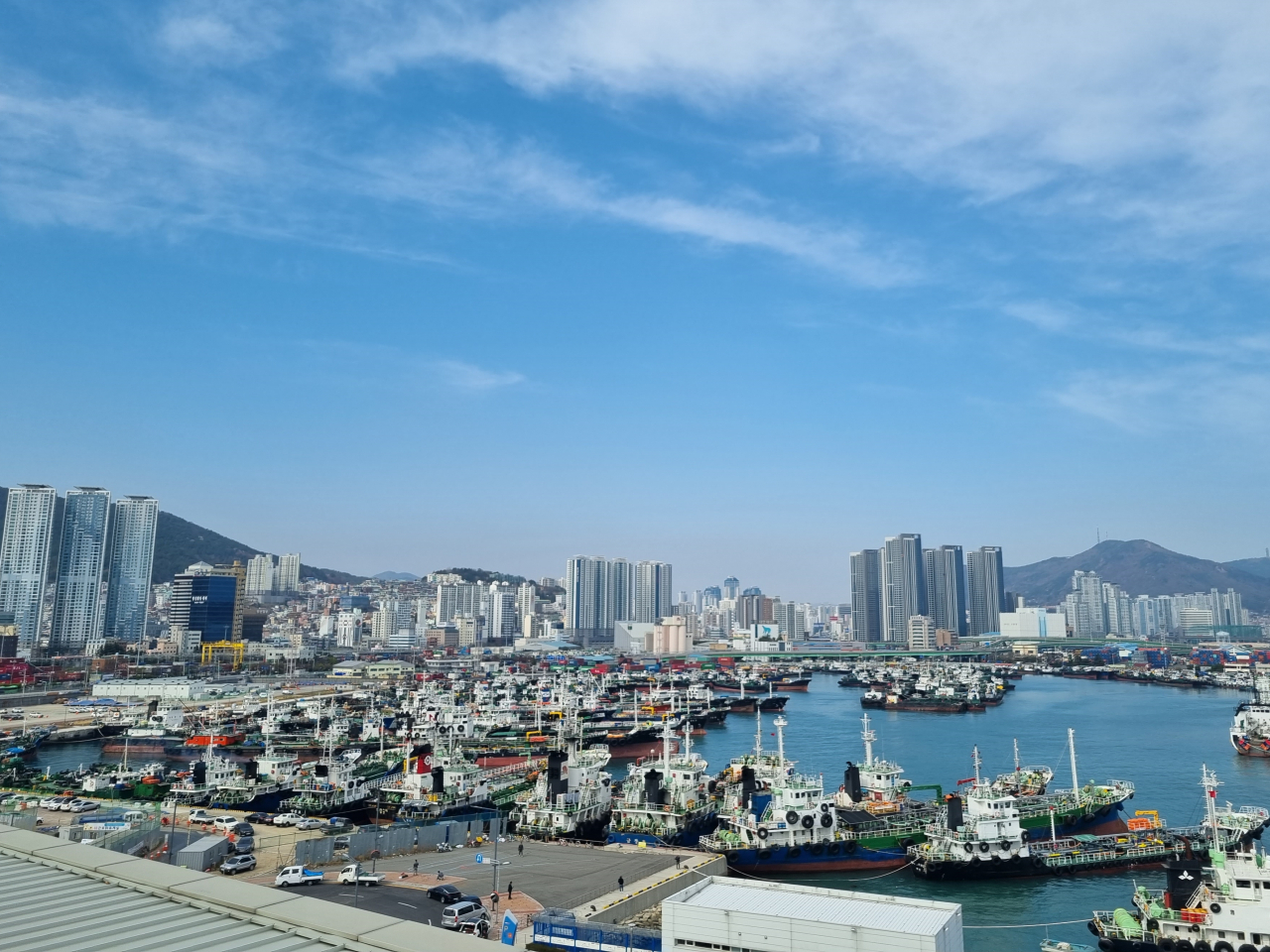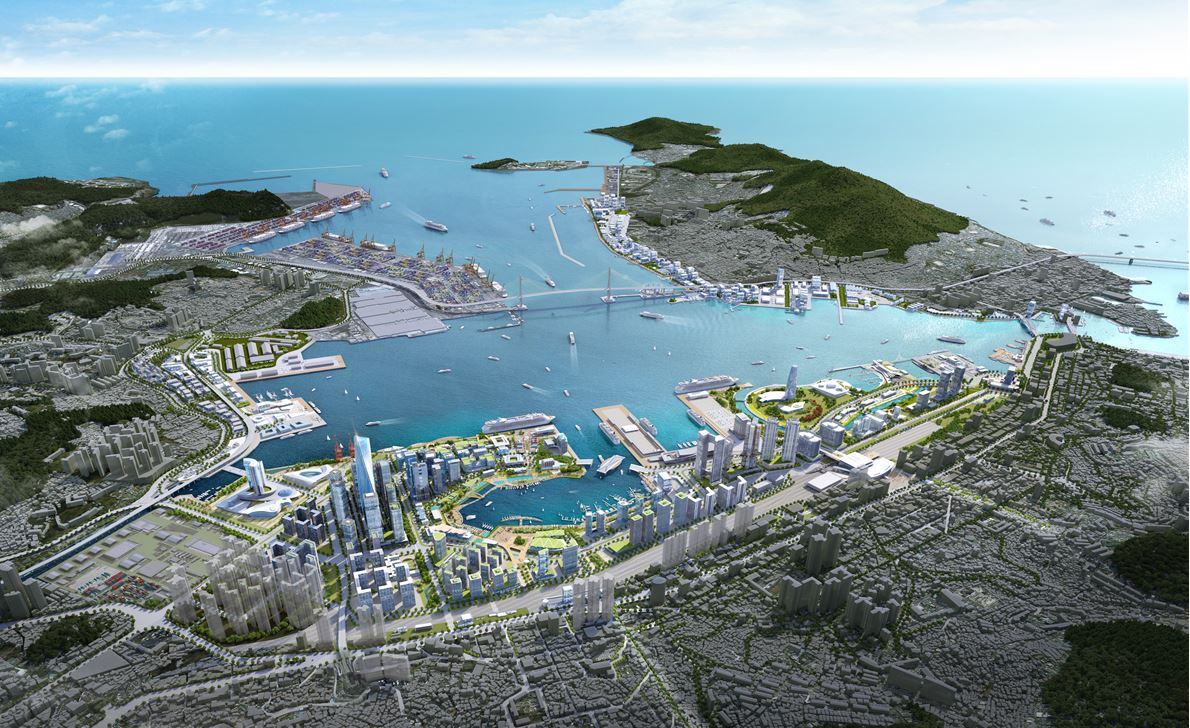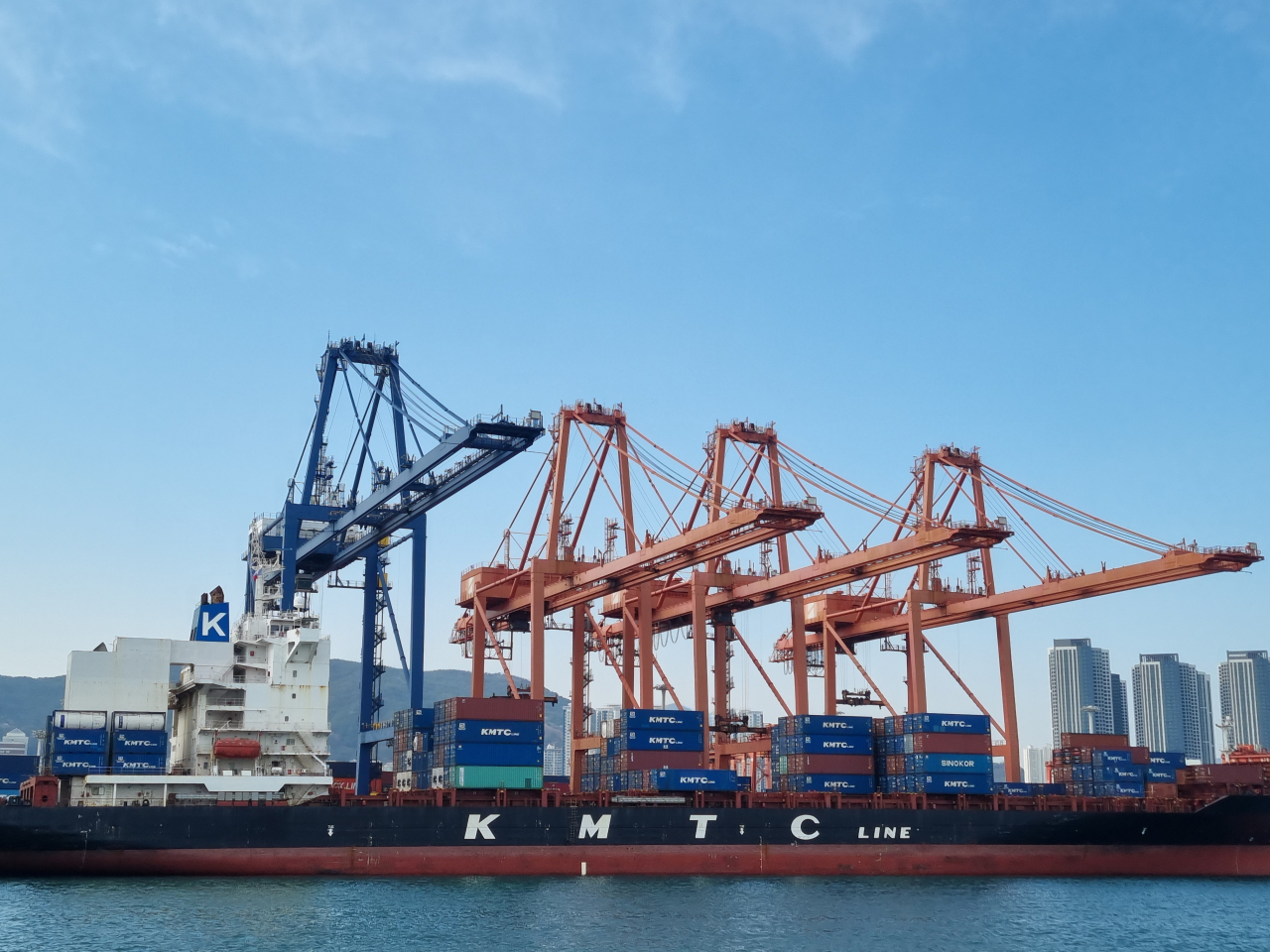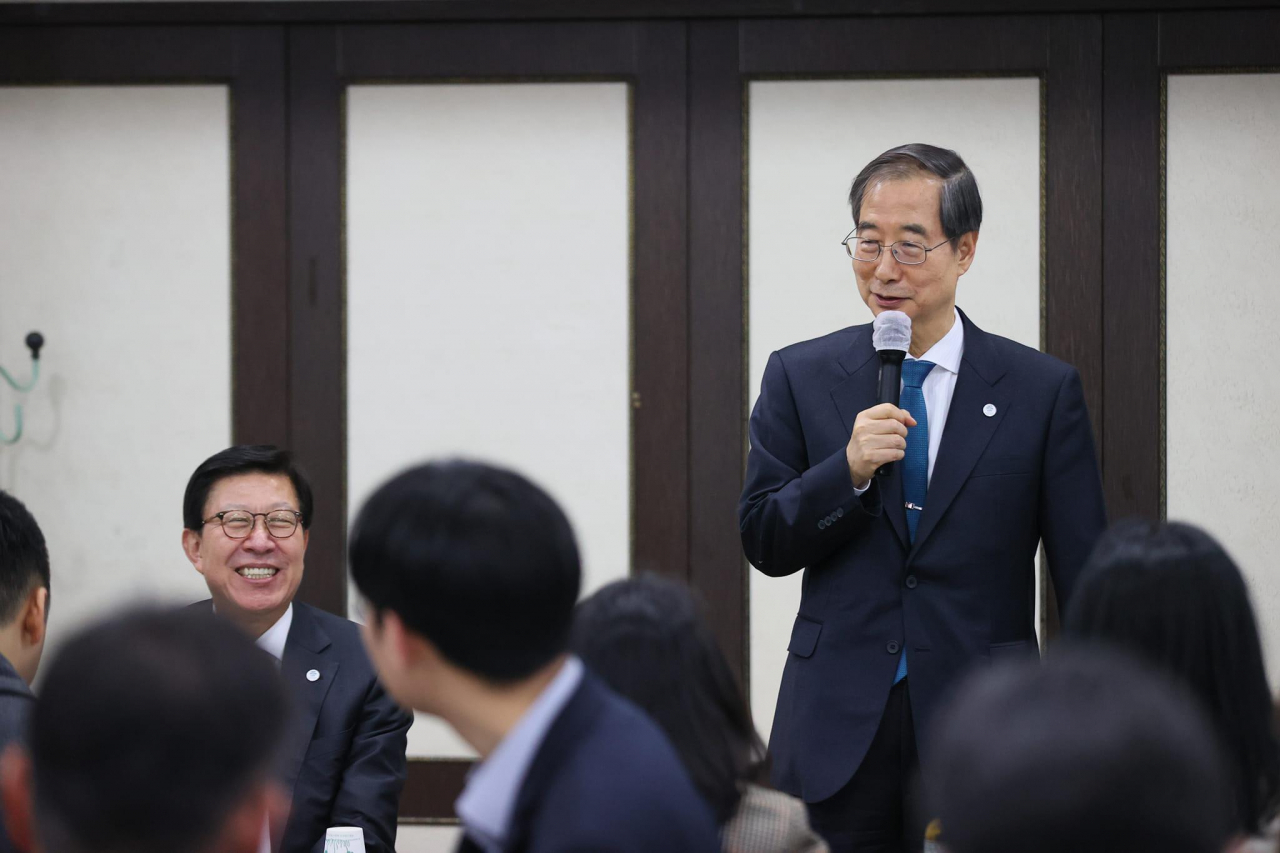
BUSAN – Floating islands and hydrogen-powered trams were among the plans unveiled Thursday to turn Busan’s historic North Port area into a World Expo 2030 site.
The city, bidding to host the event in 2030, plans to leave many harbor facilities in place to turn them into historic attractions and cultural facilities, while reducing the Expo’s environmental footprint.
Redeveloping the area will “return the harbor to the people,” the city said, as the port is effectively cut off from the rest of the city by railways.
Prime Minister Han Duck-soo told a news conference in Busan on Tuesday that he was confident that a World Expo in the city could be “completely different from ones in the past.”
Using up to 3.4 square kilometers of partially reclaimed land, the organizers promised that the venue would be constructed in an environmentally friendly manner.
This would include 2 square kilometers for pavilions and exhibitions, double the area planned for the 2025 World Expo venue in Osaka, Japan.
The site showcases the eco-friendly ways World Expo venues would be constructed, and how the host nation will seek joint prosperity and solutions to problems or crises with developing economies.

The North Port has been under redevelopment since November 2008, when the city initiated a 7 trillion won ($5.4 billion) project that includes the relocation of active container piers and an off-dock container yard. The plans to provide an Expo venue were included when the city’s bid was announced in 2019.
Cho You-jang, director general of 2030 Expo Bid Promotion Headquarters under the Busan Metropolitan Government, said the refurbishment would make use of the port’s existing features.
"Some of the remnants like cranes will remain as tourist sights during the World Expo," Cho said. "Parts of the old piers will serve as historical cultural spaces through processes like warehouse restoration, allowing the old port to be preserved in history."
The site will feature an opera house and hydrogen-powered transportation such as a tram, as well as a landmark building and a data silo to archive World Expo-related documents.
The proposed site will be a 15-minute ride from a new airport on the island of Gaedeokdo via hydrogen tram beginning in 2029.
Cho also expected the proposed Busan site to have at least 60,000 square meters of modular floating infrastructure, including a garden. The installation of the floating space will "give visitors a clue of how climate-vulnerable populations can survive and thrive" even after the sea level rises, Cho said.
"Busan will take advantage of the floating city construction technique that does not disrupt the sea current," Cho said.

Cho pledged a smooth implementation of the port relocation.
For example, Jaseongdae, a container pier handling about a fourth of North Port's total container traffic, will relocate next to piers on the headland in 2024. Another small pier harboring government-owned ships will move to Yeongdo islet across the headland.
But acquiring some other areas such as an off-dock container yard will require legislation, according to Cho.
On the other hand, terminals for international and domestic passenger ships, cruise ferries and yachts will stay there even after the redevelopment.
Busan has been a seaport since the 1400s, when Japanese traders had an outpost there.
The port began modern operation in 1876 after the Treaty of Ganghwa Island. Korea, then referred to as Joseon, ended its isolation policy and opened up to traders from places other than Japan.
Soon after Japan's colonial rule ended in 1945, Busan served as the last bastion of refugees as the Korean War broke out in 1950 and served as a temporary wartime capital.
Decades on, Busan rose to become one of the top 10 sea ports in the world, as measured by container throughput. But with the constant increase in cargo traffic in general, North Port was effectively replaced by Busan New Port, about 20 kilometers west of the old port. Busan New Port now handles nearly 70 percent of Busan's total container trade.
In light of this, North Port has slowly been losing its attractiveness as a logistics hub. Moreover, the site -- curved inward like a bay surrounded by a headland and an island jutting out into the sea -- has long been separated from Busan residents and travelers due to railway lines standing between it and the rest of Busan.
Should Busan manage to host the World's Fair in 2030, Korea will become the seventh country to be chosen to host the Olympics, the World Cup and the World Expo, after the United States, Canada, Japan, France, Germany and Italy, according to the government.

Prime Minister Han said that if Busan were to win the bid, it will mark a critical juncture in Korea's bid to nurture self-sufficient economies in developing countries.
In line with its bid to double the size of development assistance by 2030, Korea will take issues of climate change and inclusive growth seriously, according to Han.
The World Expo in Busan "will open a new horizon in Korea's diplomatic front," Han said.
Busan is competing with the Saudi capital of Riyadh; Rome; and the Ukranian city of Odesa. These cities submitted a candidature dossier last year.
The Bureau international des expositions, or BIE -- the World Expo’s decision-making authority -- will dispatch representatives to candidate cities to assess the feasibility and viability of each Expo project as laid out in the candidature dossiers. Busan is third on the list for the BIE officials’ visit.
![[AtoZ into Korean mind] Humor in Korea: Navigating the line between what's funny and not](http://res.heraldm.com/phpwas/restmb_idxmake.php?idx=645&simg=/content/image/2024/04/22/20240422050642_0.jpg&u=)


![[Exclusive] Korean military set to ban iPhones over 'security' concerns](http://res.heraldm.com/phpwas/restmb_idxmake.php?idx=645&simg=/content/image/2024/04/23/20240423050599_0.jpg&u=20240423183955)
![[Herald Interview] Why Toss invited hackers to penetrate its system](http://res.heraldm.com/phpwas/restmb_idxmake.php?idx=645&simg=/content/image/2024/04/22/20240422050569_0.jpg&u=20240422150649)
![[Graphic News] 77% of young Koreans still financially dependent](http://res.heraldm.com/phpwas/restmb_idxmake.php?idx=645&simg=/content/image/2024/04/22/20240422050762_0.gif&u=)